Netflix’s horror blockbuster ”Stranger Things” and HBO’s black comedy/whodunit “The White Lotus” led the Creative Arts Emmys this weekend with five awards apiece. “Euphoria,” the gritty teen phenom, followed right behind with four prizes, while Netflix’s global sensation, “Squid Game,” the Korean survival drama, captured three wins, as did HBO’s popular “Barry” comedy (for editing, sound editing, stunt coordination). However, the critically-acclaimed, mind-bending “Severance” (Apple TV+) managed only two wins. (“Euphoria” and “Squid Game” also each won a guest acting Emmy, which we’re not including in the above craft tabulation.)
On the historical drama front, “The Great” (Hulu) finally broke through in Season 2 with an impressive win for period costumes, while “Bridgerton” (Netflix) took period hairstyling, and “The Gilded Age” (HBO Max) earned period/fantasy production design.
On the downside, Marvel’s mind-bending “Moon Knight” only managed one win (sound editing), while the time-bending “Loki” was shut out.
On the animation front, “Chip ‘n Dale: Rescue Rangers” (Disney+) became the first-ever animated film to win Television Movie, while Netflix took Animated Program honors for the acclaimed “Arcane” as well as for previous winner “Love Death + Robots” for Short Form. In addition, the Juried Award winners for Individual Achievement in Animation went to: Anne-Laure To, “Arcane”; Julien Georgel, “Arcane”; Bruno Couchinho, “Arcane,”; Lexy Naut, “The Boys Presents: Diabolical”; Kecy Salangad, “The House”; Alberto Mielgo, “Love, Death + Robots.”
Here’s what we learned:
1. Vecna carried “Stranger Things”
For the Duffer Brothers’ penultimate season four, they riffed off of “A Nightmare on Elm Street” and introduced their most humanoid monster, Vecna (portrayed by Jamie Campbell Bower). The result was the most-watched English-speaking show on Netflix, which led to a comeback with its Emmy-leading 12 nominations. Yet through its previous three seasons “Stranger Things” only earned a total seven craft Emmys (three for sound editing, and one each for editing, main title design, main title theme music, and casting).
Thus, the big question was if it could break through for more wins. The answer was yes: scoring first-time Emmys for music supervision (turning Kate Bush’s “Running Up That Hill” into a viral monster), prosthetic makeup, sound mixing, and stunt coordination. It also won again for sound editing. However, it missed out for the Vecna special visual effects, losing to “The Mandalorian” spin-off, “The Book of Boba Fett” (more on that below). It probably didn’t help that most of the Vecna work was practical, including the Emmy-winning prosthetic makeup and body suit for actor Bower.
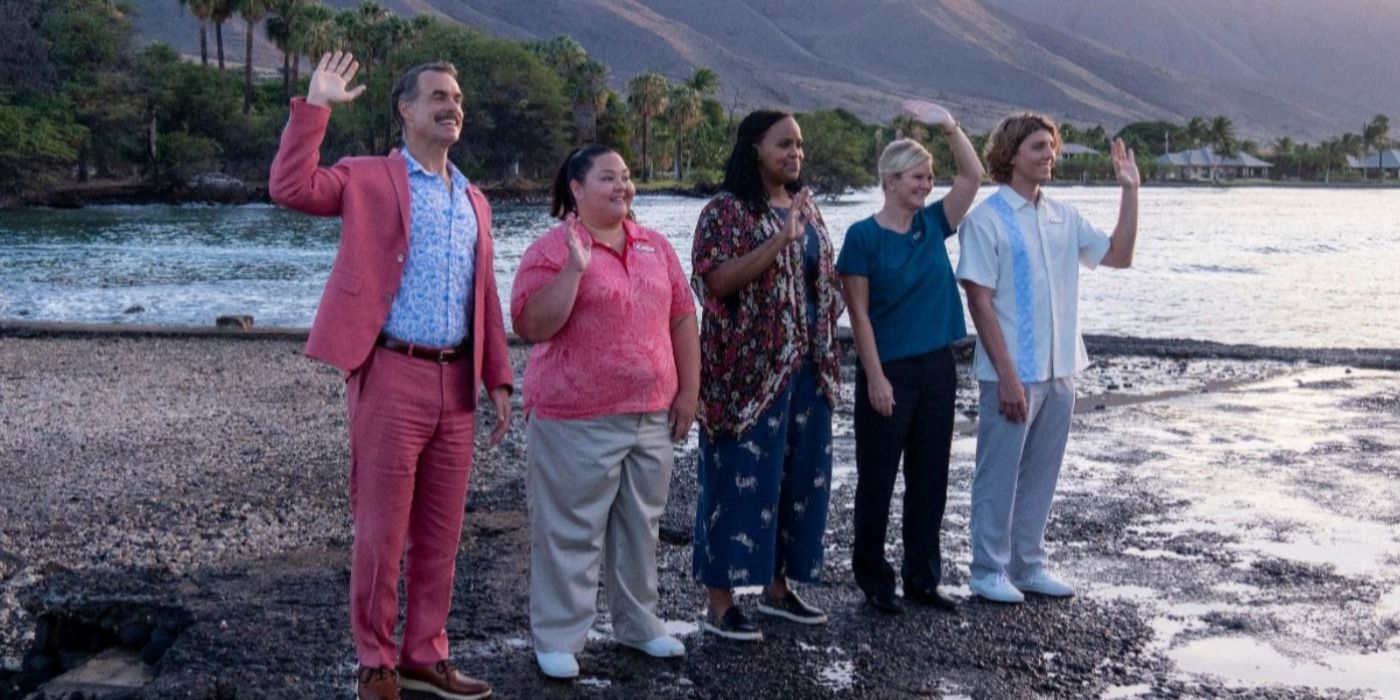
“The White Lotus”
HBO Max
2. How “The White Lotus” won the battle of the whodunits
In a mini-battle of the whodunits, Mike White’s dark limited series “The White Lotus” beat “Only Murders in the Building” (Hulu), Steve Martin and co-creator John Hoffman’s comedy/murder mystery set in an Upper West Side apartment. “The White Lotus” was rewarded for turning Hawaii as a tropical paradise on its head, and won for casting, editing, main title theme, original music score, and sound mixing. “Only Murders,” which, like its rival, was nominated for nine Emmys, only took home sound mixing. (And an additional prize for guest actor.)
The combination of John M. Valerio’s editing, Cristobal Tapia de Veer’s score and theme, and the sound mixing uniquely created a disconnect from both the landscape and the guests’ personal crises. In addition, casting director Meredith Tucker topped it off with finding the right cast to pull off White’s blend of black comedy, dread, and vulnerability through the casting of Jennifer Coolidge as grief-stricken Tanya and Molly Shannon as mother-in-law Kitty, and Murray Bartlett’s unpredictable Armond.
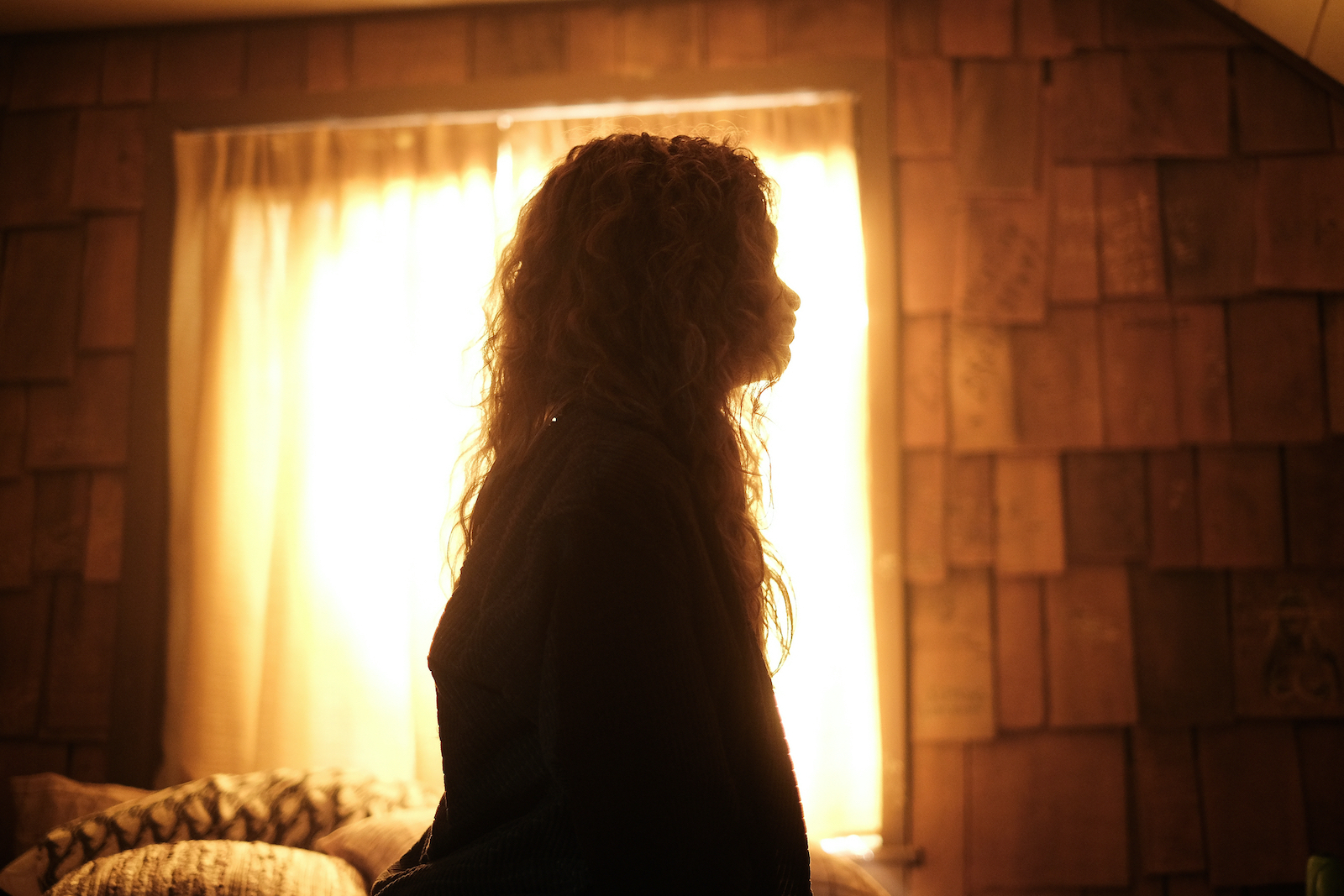
“Euphoria”
Eddy Chen / HBO
3. How “Euphoria” had a breakthrough sophomore season
“Euphoria” finally overcame the knock of style over substance in Season 2. After previously only winning craft Emmys for contemporary (non-prosthetic) makeup and original song, the provocative show from creator/director Sam Levinson broke through in choreography, cinematography, and editing, while also winning again for makeup. This was as a result of a dramatic change in direction — exploring the internal psyche of the characters through more introspection and a new visual aesthetic. Obviously, the TV Academy took notice of the way it pulverized viewers with Gen Z trauma about sex, drugs, violence, and social media.
However, “Euphoria’s” greatest change in direction came in cinematography with Levinson and Emmy-winning cinematographer Marcel Rév going from large-format digital to 35mm, reviving Kodak’s Ektachrome film stock. The result was a switch from mirroring the visual language of its teenage protagonists in Season 1 to nostalgic memory of evoking old photographs in Season 2. This look was conveyed by Ektachrome’s creamy green and amber glow and blown-out contrast of a thin negative. The strongest episode, “The Theater and Its Double,” showcased the provocative high school play, “Our Life,” as a tour de force.
In terms of editing, the shift in Levinson and Rév’s visual approach had an impact, resulting in a “more restrained yet poetic cutting pattern” for supervising editor Julio C. Perez IV. He reveled in the impressionistic tone and ambiguities, yet wasn’t afraid of the show’s overall bombast. This was especially appropriate in conveying the doppelganger theme among various characters,
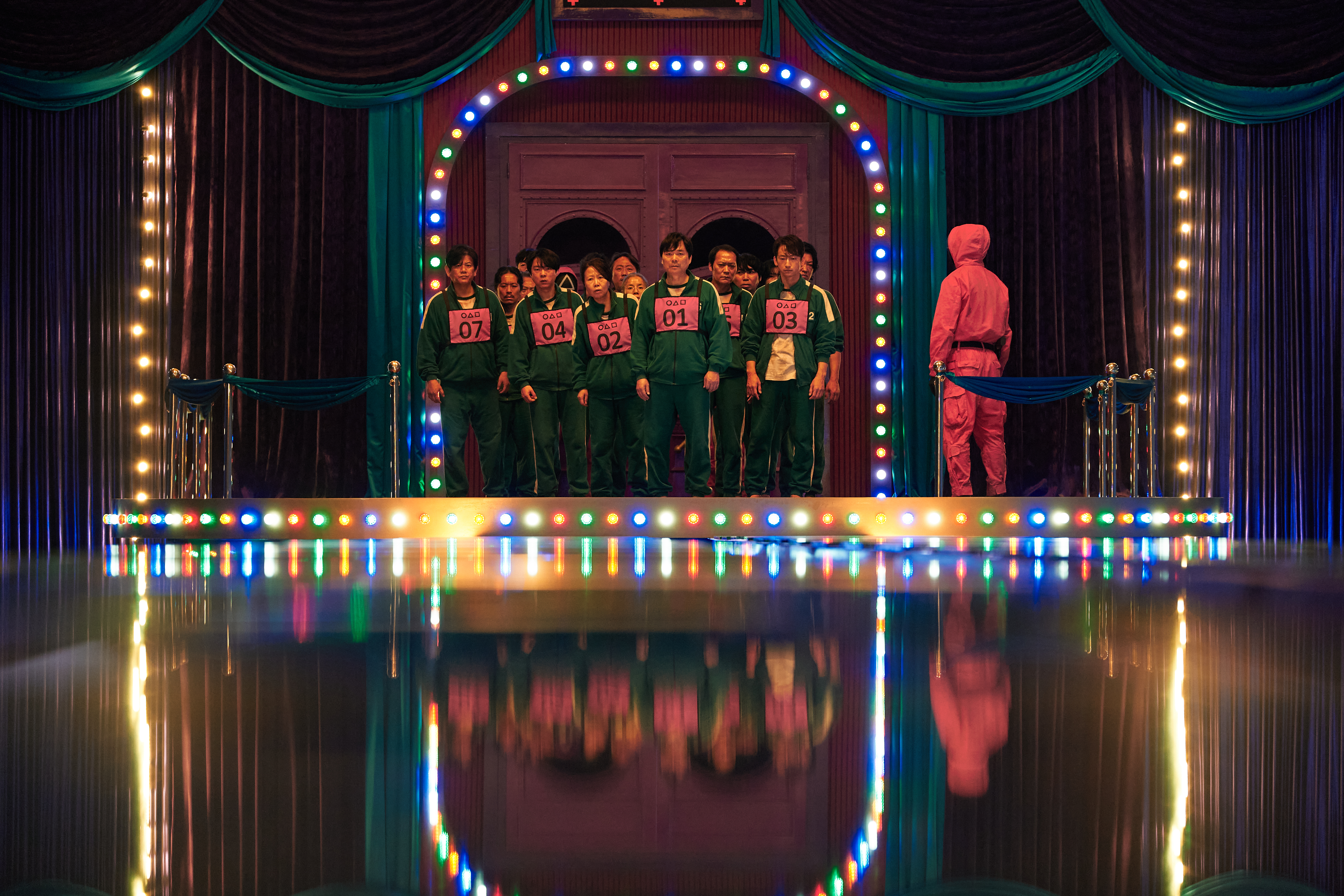
“Squid Game” (Episode 7: “VIPS”)
Netflix
4. How “Squid Game” became an emerging crafts winner
The emergence of “Squid Game” as a global juggernaut already made Emmy history as the first non-English speaking show competing for Best Drama Series. That translated into craft wins for contemporary production design, special visual effects in a single episode, and stunt performance.
The production design of Chae Kyoung-sun, though, was key for her enormous, custom-built space that accommodates six large-scale game sets. The shape language and color palettes were inspired by fairy tales and the sets were built around the notion of chaos and confusion. The “Gganbu” episode, devoted to survival for all the marbles, was noteworthy for its recreations of a suburban neighborhood that evoked childhood nostalgia.
“Squid Game’s” win for special visual effects in a single episode (launched last season as a replacement for special visual effects in a supporting role) went to South Korea’s Gulliver Studios for the impressive work on the glass bridge on “VIPS,” working with reflections and colorful lighting to evoke a deadly high-wire circus act in Vegas.
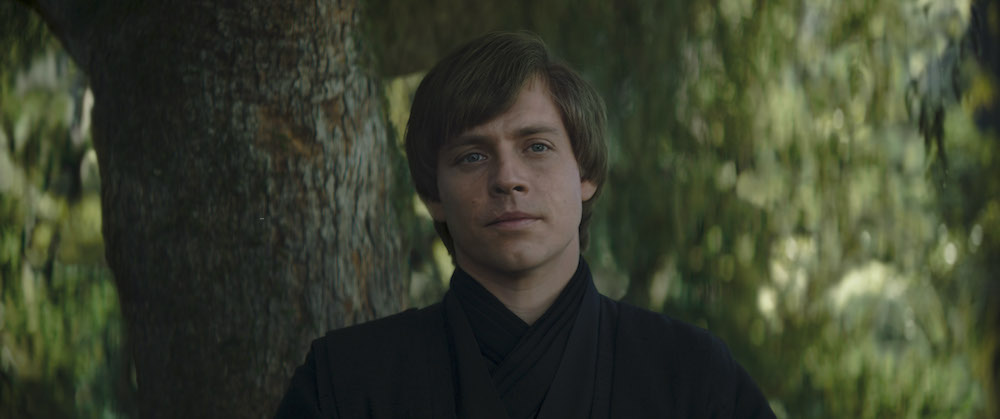
Mark Hamill (kind of) in “The Book of Boba Fett”
Lucasfilm Ltd. / Disney+
5. How “The Mandalorian” helped “The Book of Boba Fett”
“The Book of Boba Fett,” the “Star Wars” spin-off (Disney+), starring the bounty hunter-turned crime lord (Temuera Morrison), took advantage of ILM’s Emmy-winning VFX on “The Mandalorian” to score its own Emmy win. ILM continued to excel at its StageCraft sequences (especially Mando’s elevator ride), Mando’s trip to a ring-shaped space station (the Ringworld Megastructure), a host of character work (the Tatooine sand ape, the animatronic Rancor, the BD droid, and the pit droids), and the improved de-aging of Mark Hamill’s Luke Skywalker (ILM shot performance actor Graham Hamilton on set with Hamill giving instructions and applied their deepfake technique along with other CG facial capture tech as a composite performance).
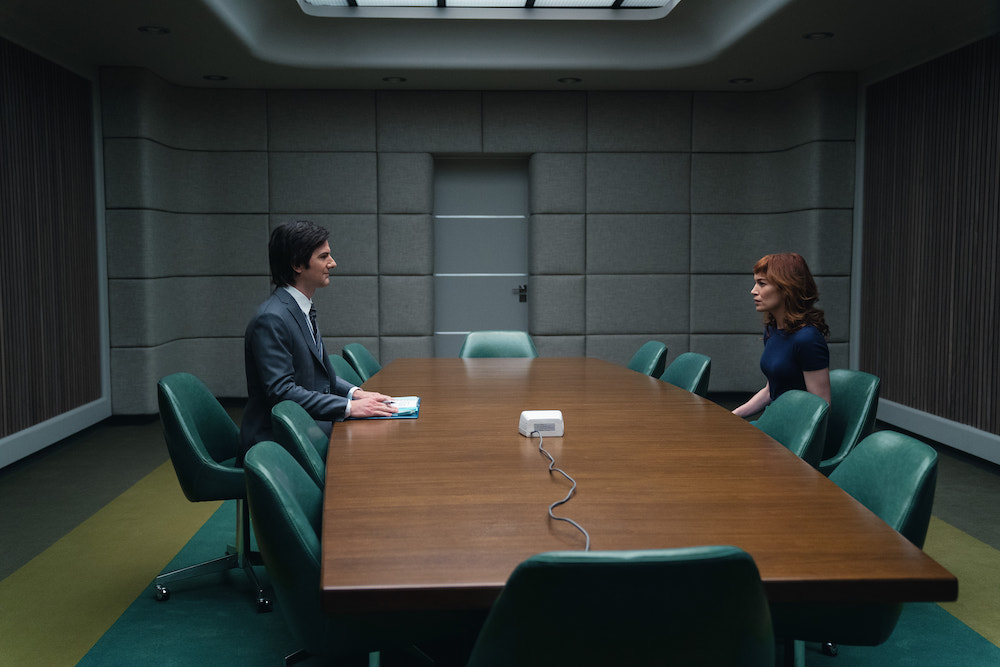
Adam Scott and Britt Lower in “Severance”
Atsushi Nishijima / Apple TV+
6. What went wrong with “Severance”?
“Severance” (from showrunner Dan Erickson and directors Ben Stiller and Aoife McArdle) was touted by many as the season’s best new series. It had an ingenious premise — a surgical procedure that splits its characters’ workplace and personal memories — along with a minimalist aesthetic. Yet while it was nominated for seven craft Emmys, it won for only the haunting score by Theodore Shapiro and its inventive main title design.
Shapiro took an appropriately minimal approach by confining himself to four chords. He also experimented with piano notes by reversing, glitching, and making them fall apart. However, the main theme, which is also a contender, has a wonderful melancholy quality that recalls David Shire’s “The Conversation.”
The main title sequence, created by Berlin artist Oliver Latta (aka Extraweg), is extraordinary, like Saul Bass on acid. The way it fixates on Mark Scout as an animated figure, struggling to move like a rat in a maze, or escape, split into multiple versions, is the perfect metaphor for the show.



